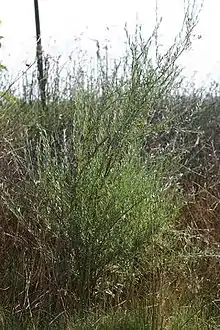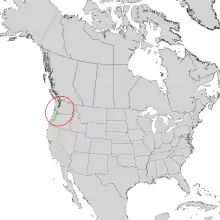Salix sessilifolia
Salix sessilifolia is a species of willow known by the common name northwest sandbar willow. It is native to the west coast of North America from British Columbia and the US states of Washington and Oregon.[1] It grows on sandy and gravelly riverbanks, floodplains, and sandbars.
| Salix sessilifolia | |
|---|---|
 | |
| Scientific classification | |
| Kingdom: | Plantae |
| Clade: | Tracheophytes |
| Clade: | Angiosperms |
| Clade: | Eudicots |
| Clade: | Rosids |
| Order: | Malpighiales |
| Family: | Salicaceae |
| Genus: | Salix |
| Species: | S. sessilifolia |
| Binomial name | |
| Salix sessilifolia | |
 | |
| Natural range of Salix sessilifolia | |
| Synonyms | |
| |
Salix sessilifolia Nutt. is a shrub growing 3 to 5 metres (10 to 16+1⁄2 ft), exceptionally 7.5 m (24+1⁄2 ft) in height,[2] sometimes forming colonial thickets of clones by sprouting repeatedly from its root system. The leaves are up to 12 centimetres (4+1⁄2 in) long, oval with pointed tips, edged with spiny teeth, and generally coated thinly in silky hairs. The inflorescence is a catkin of flowers, male catkins up to 4.5 cm (2 in) long and female catkins longer and more slender.
References
- Flora of North America vol 7 p 59
- Arno, Stephen F.; Hammerly, Ramona P. (2020) [1977]. Northwest Trees: Identifying & Understanding the Region's Native Trees (field guide ed.). Seattle: Mountaineers Books. p. 191. ISBN 978-1-68051-329-5. OCLC 1141235469.
